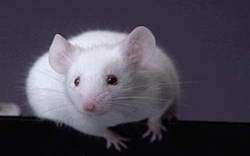Why mice develop 'knots' while exploring a new environment

During exploration of a new environment, mice establish "knots" - preferred places visited sporadically and marked by the performance of twists and turns, according to a new study by Israel and Canada-based researchers.
The research provides evidence that the formation of these places is increased by stress, and suggests that the tortuous movements improve the interpretation of the visual scene, enhance the memory of the place and provide the mouse with multiple views that turn the established places into navigational landmarks. Details are published January 15 in the open-access journal PLoS Computational Biology.
The notion of "a place" and an "itinerary" is taken for granted in everyday life but how these abstract ideas are created is a subject of much discussion and research. Using advanced computational tools the authors show how a particular type of place (knot) is formed and then used by mice. The knots, and other preferred places discovered earlier, contribute to our understanding of how the animals map the environment, and what they try to accomplish.
In an empty arena devoid of proximal cues, the rich perceptual inputs generated by the twisting and turning could improve the mouse's view of the environment and more generally enhance or even embody for the mouse the memory and significance of this place by tagging it with a place-specific perceptual signature, say the authors.
Exploration is a central component of human and animal behavior that has been studied in rodents for almost a century. It is presently one of the main models for studying the interface between behavior, genetics, drugs, and the brain. Until recently, rodents' exploration of an open field has been considered to be largely random. Lately, this behavior is being gradually deciphered, revealing reference places established and used by the animals for navigation.
Portrayal of how behavior is structured within and around knots in normal animals can later be used to study how this behavior is affected by pharmacological and genetic manipulations.
More information: Dvorkin A, Szechtman H, Golani I (2010) Knots: Attractive Places with High Path Tortuosity in Mouse Open Field Exploration. PLoS Comput Biol 6(1): e1000638. doi:10.1371/journal.pcbi.1000638
Provided by Public Library of Science
















